When it comes to welding, the choice of shielding gas can have a significant impact on the quality of the weld.
While typically used as an oxidizing agent, oxygen can also be used as a shielding gas in MIG welding to produce high-quality welds with excellent penetration and low levels of spatter.
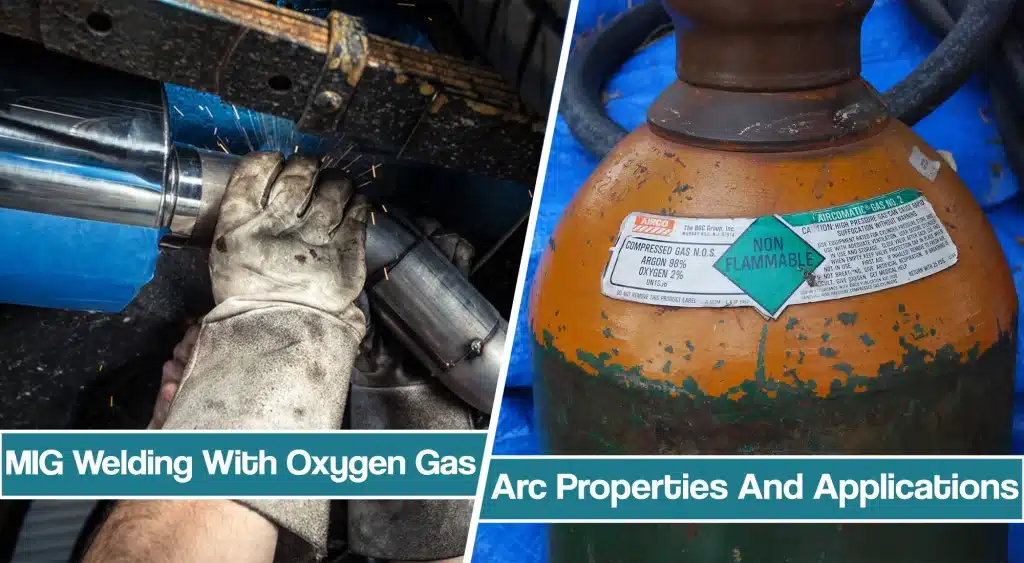
However, using oxygen as a MIG shielding gas requires careful attention to safety and proper technique, as the increased heat and potential for oxidation can lead to a variety of issues if not handled correctly.
In this article, we will explore the benefits and challenges of MIG welding with oxygen gas.
Can Reactive Gases Be Used As Shielding In MIG Welding?
Reactive gases are typically not used as shielding gases in MIG (Metal Inert Gas) welding. These gases can chemically react with the metal being welded or the welding process itself.
Examples of reactive gases include oxygen, nitrogen, and carbon dioxide.
However, reactive gases, such as oxygen MIG welding shielding gas or pure carbon dioxide, can have a positive effect on weld bead, but only when used with care and in low amounts.
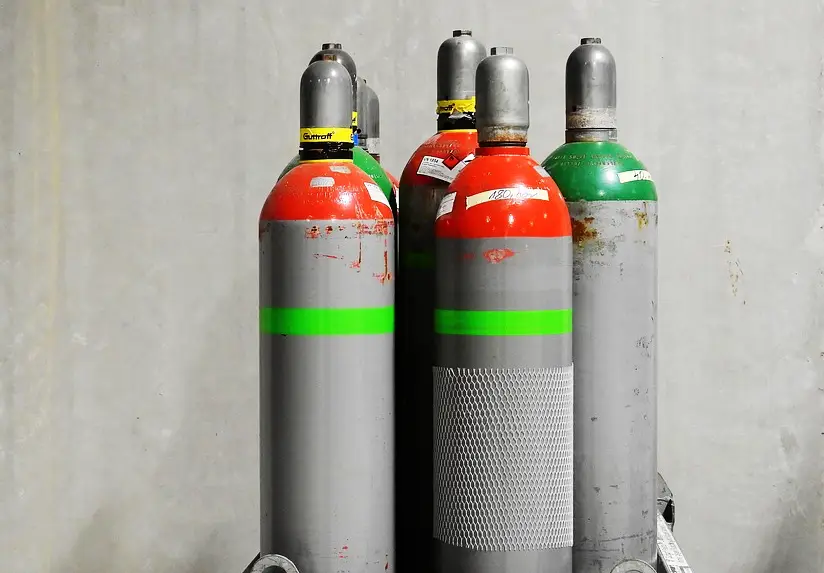
Arc Properties Of Oxygen As Shielding Gas
While oxygen is primarily known as an oxidizing agent, it can also be used as a shielding gas for MIG welding. Oxygen acts as an enhancer for weld penetration, allowing the weld to reach deeper into the base metal.
Oxygen enhances the heat transfer rate during welding. This increased heat can be beneficial for certain applications, such as when joining metals with high thermal conductivity or when dealing with materials that require higher heat input for proper fusion.

However, it’s important to note that using oxygen as a shielding gas requires careful consideration and appropriate safety measures. The increased heat and the presence of oxygen can also lead to some challenges, including the potential for oxidation and an increased risk of fire hazards.
Can You MIG Weld With Pure Oxygen?
No, you cannot MIG weld with pure oxygen shielding gas. Welding with pure oxygen as a shielding gas in MIG welding is highly discouraged and considered extremely dangerous. Oxygen supports combustion, and using pure oxygen as a shielding gas greatly increases the risk of fire and explosions. The high oxygen concentration can lead to rapid and uncontrollable oxidation.
Welding with pure oxygen reactive gas can result in a phenomenon known as oxygen embrittlement. The high oxygen levels can cause the weld and the base metal to become brittle, reducing the overall strength and integrity of the weld joint and finished weld.
Additionally, Pure oxygen does not provide the necessary stability for a consistent welding arc. The absence of other inert gases, such as argon or helium, can cause the arc to become erratic, resulting in poor weld quality and reduced control.
However, due to good heat and weld pool fluidity, oxygen is used in small amounts to complement the argon or Ar/Helium common shielding gases.
MIG Welding With Oxygen Mixtures
In MIG welding, various oxygen mixtures are commonly used as shielding gases to achieve specific welding results. Commonly, these are specialized mixtures that are used when MIG welding stainless steels. Oxygen, when blended with argon, can effortlessly serve as an active shielding gas as long as its concentration is below 10%. It as well goes a long way in contributing the prerequisite high energy and heat levels to welds.
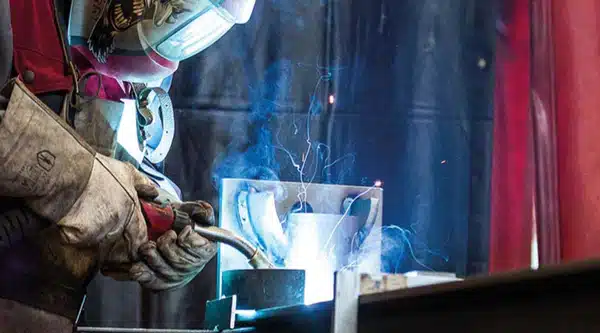
Oxygen facilitates nearly all burning processes by simply augmenting temperature levels and combustion rates. By improving heat transfer, oxygen can fast-track droplet rate and even keep the weld pool in molten condition for prolonged periods of time. In turn, this allows the metals you might be working on to flow and eventually fuse much more consistently across the weld and flatten the bead.
MIG Welding With Oxygen/Argon Mix (98% Argon + 1-2% O2)
A mixture of argon and 1-2% oxygen is commonly used as a shielding gas in MIG welding for specific applications, such as when welding stainless steel or certain types of carbon steel. Using pure argon in welding always comes with a number of shortcomings that can impair its capability to guarantee the integrity of welds and arc stability. The addition of diminutive levels of oxygen to argon has been proven to immensely improve the shielding gas’s fluidity and even the overall quality of the weld deposit.
When MIG welding stainless steel, the addition of a small percentage of oxygen (typically 1-2%) to argon gas can provide several benefits. The oxygen helps to stabilize the arc and improve arc characteristics, resulting in better weld pool control and reduced spatter. It also enhances the oxide layer formation on the weld surface, which contributes to improved weld appearance and corrosion resistance. This given blend of argon and oxygen is mostly utilized in the spray transfer process for stainless steels.
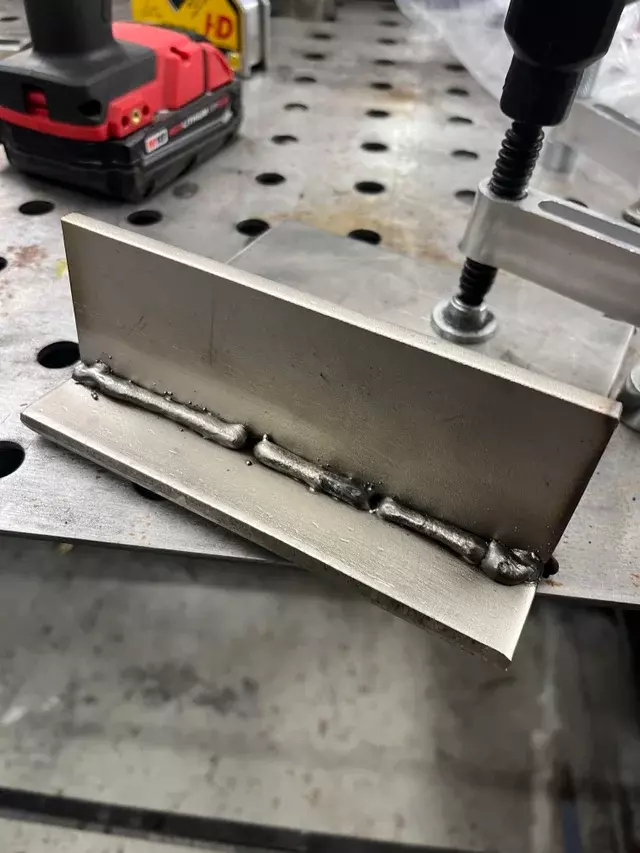
In some cases, a mixture of argon and oxygen is used when welding carbon steel, particularly for specific applications or when dealing with challenging welding conditions. The addition of a small amount of oxygen helps to increase the heat input and penetration, allowing for better fusion in thicker materials or when deeper weld penetration is required. It can also aid in reducing the risk of porosity and improve weld quality. The 95% Argon 5% oxygen blend is the most preferred solution when it comes to welding general carbon steels. It is noted for delivering a markedly more fluid, but controllable weld pool and much higher travel speeds when compared to the other mixtures.
MIG Welding With Argon/Helium/Oxygen Mix
Just as a helium addition to argon increases the arc energy when welding non-ferrous materials, so does a helium addition to argon-oxygen affect the arc with the GMAW process on ferrous materials. A tri-gas mixture of argon, helium, and oxygen is used in MIG welding for specific applications that require enhanced heat and penetration.
When deep penetration is required, such as in thick metal sections, the tri-gas mixture can be advantageous. Helium has a higher ionization potential and provides a hotter and more concentrated arc compared to argon. The addition of helium, along with oxygen, helps increase the heat intensity and depth of penetration, allowing for effective welding in thicker materials.
In certain applications where high welding speeds are necessary, such as in production or industrial settings, the tri-gas mixture can be beneficial. Helium improves arc stability, while oxygen enhances heat transfer and penetration. This combination enables faster travel speeds while maintaining proper fusion and weld quality.
When Should You Avoid Using Oxygen As Shielding?
Even though oxygen offers advantageous mechanical properties of the weld, oxygen is a reactive gas, so you should be careful when using it. There are certain cases where using any level of oxygen as a shielding gas in MIG welding is not recommended.
Oxygen should not be used as a shielding gas when welding reactive metals such as titanium, zirconium, or reactive alloys. These metals have a high affinity for oxygen and can readily react, leading to severe oxidation, embrittlement, and compromised weld quality.
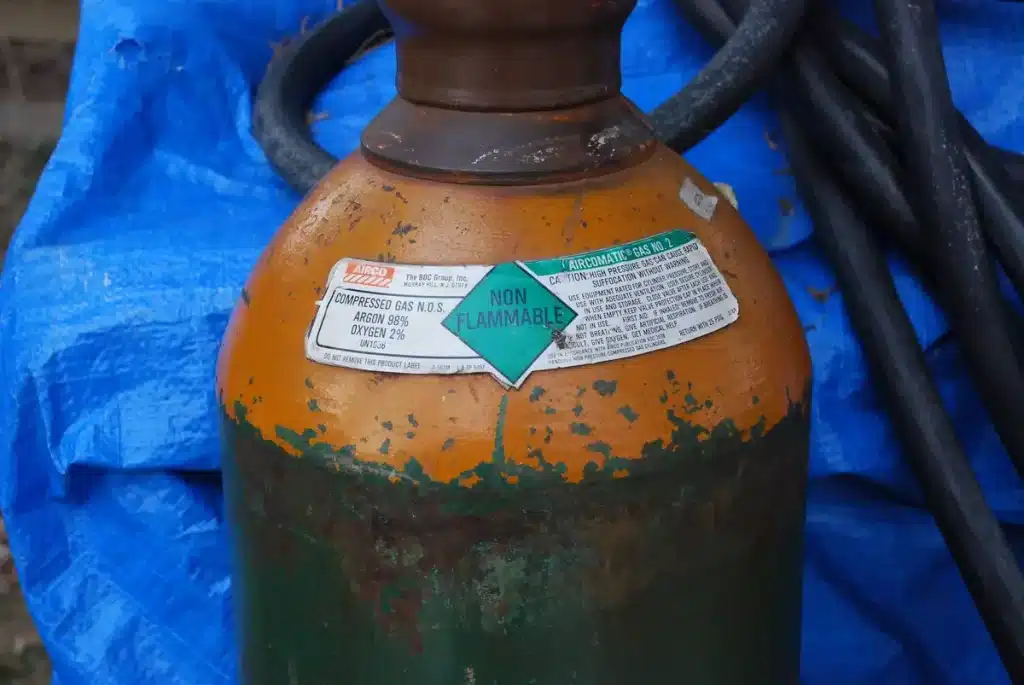
The use of oxygen as a shielding gas can lead to excessive heat input. The high heat can cause distortion, warping, and burn-through in thin metal sections. It is advisable to use shielding gases like pure argon or argon-rich mixtures to provide adequate protection without compromising the integrity of the thin material.
If welding in environments with high flammability or explosive risks, the use of oxygen as a shielding gas should be strictly avoided. Oxygen supports combustion and increases the likelihood of fire hazards and explosions.
Can You Use Oxygen in TIG Welding?
No, oxygen is not typically used as a shielding gas in TIG (Tungsten Inert Gas) welding. TIG welding requires an inert shielding gas to protect the weld pool and the tungsten electrode from atmospheric contamination. The use of oxygen or carbon dioxide (CO2) mix as a shielding gas in TIG welding can result in excessive oxidation of the weld pool, causing poor weld quality, brittleness, and reduced corrosion resistance.
Oxygen can cause significant damage to the tungsten electrode used in TIG welding. The presence of oxygen can lead to tungsten oxide formation on the electrode surface, leading to increased electrode erosion, reduced electrode life, and potential weld contamination.
Pros and Cons Of Using Oxygen Shielding In MIG Welding
Pros:
- Improved weld penetration: Oxygen enhances the weld penetration, allowing for better fusion in thicker materials or when deep weld penetration is desired.
- Reduced spatter: Oxygen in the shielding gas helps to reduce spatter during the welding process, resulting in cleaner and neater welds.
- Increased heat transfer: Oxygen increases the heat transfer rate in the molten weld pool, which can be advantageous when welding metals with high thermal conductivity or when higher heat input of finished weld is required.
- Cost-effective: Oxygen is generally less expensive compared to other shielding gases, making it a cost-effective option for certain welding applications.
Cons:
- Fire hazard: Oxygen supports combustion, and using it as a shielding gas significantly increases the risk of fire and explosions. Extra precautions and strict safety measures are required when using oxygen.
- Oxidation risk: The presence of oxygen in the shielding gas can lead to excessive oxidation of the weld pool and base weld metal, resulting in poor weld quality, brittleness, and reduced corrosion resistance.
- Limited material compatibility: Using oxygen as a shielding gas is not suitable for all materials. It can cause issues when welding reactive metals, such as MIG welding aluminum or materials prone to oxidation. It also shouldn’t be used when welding thinner metal gauges.
- Arc instability: Oxygen does not provide the same level of arc stability as inert gases like argon or helium in MIG welding mild steel. It may result in erratic arc behavior, arc wander, and difficulty in maintaining proper arc length and control.
- Safety precautions: Welding with oxygen as a shielding gas requires strict adherence to safety protocols, proper ventilation, and control of oxygen levels to minimize the risk of fire hazards and ensure the safety of the welder and the workspace.
Conclusion
While oxygen can be used as a shielding gas in MIG welding, it is important to weigh its advantages and disadvantages before incorporating it into the welding process. Oxygen offers improved weld penetration, reduced spatter, and increased heat transfer, making it beneficial in certain welding applications.
However, the use of oxygen as MIG welding gas comes with significant challenges and risks, including fire hazards, oxidation concerns, limited material compatibility, and arc instability. Proper safety precautions, careful material selection, and adherence to welding best practices are crucial when utilizing oxygen as a shielding gas.
Resources
- https://eurekaoxygencompany.com/2022/02/10/argon-oxygen-mixtures-for-welding/
- https://unimig.com.au/which-gas-do-you-need-for-your-mig-weld/
- https://www.alleima.com/en/technical-center/shielding-the-weld/
- https://www.lindedirect.com/resources/gases/argon-oxygen-mixtures
- https://www.millerwelds.com/resources/article-library/what-gas-should-you-use-for-mig-welding-in-diy-applications
- https://www.tregaskiss.com/mig-welding-shielding-gas-basics/





